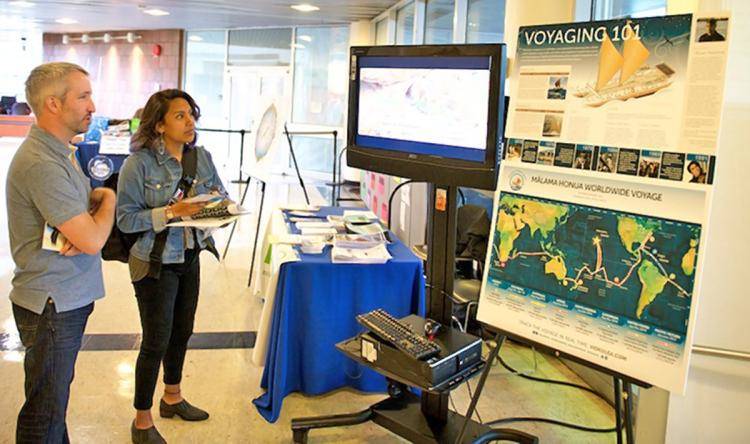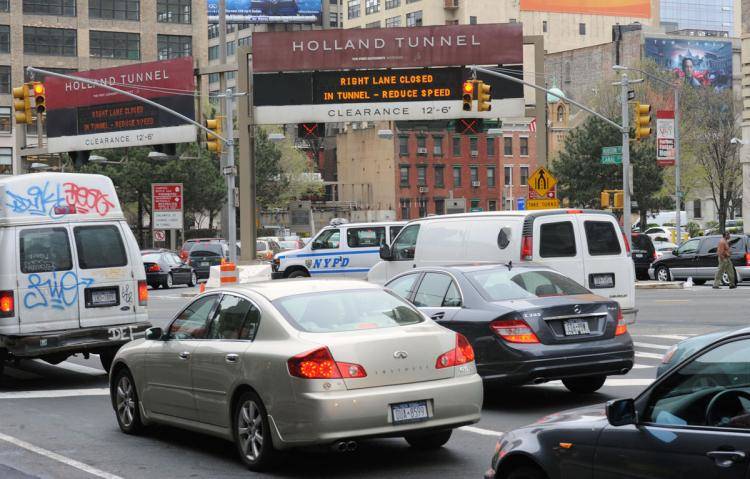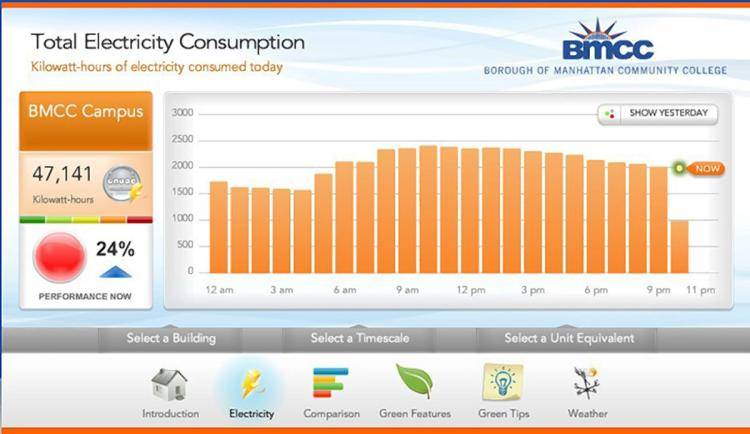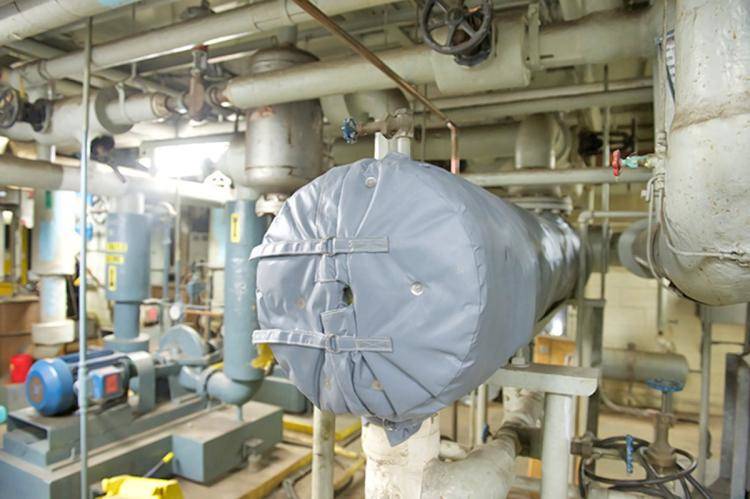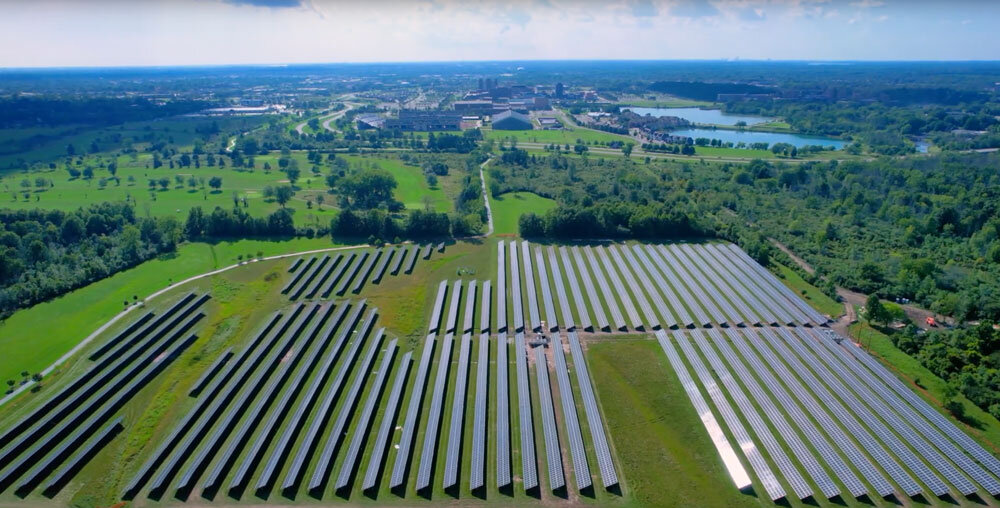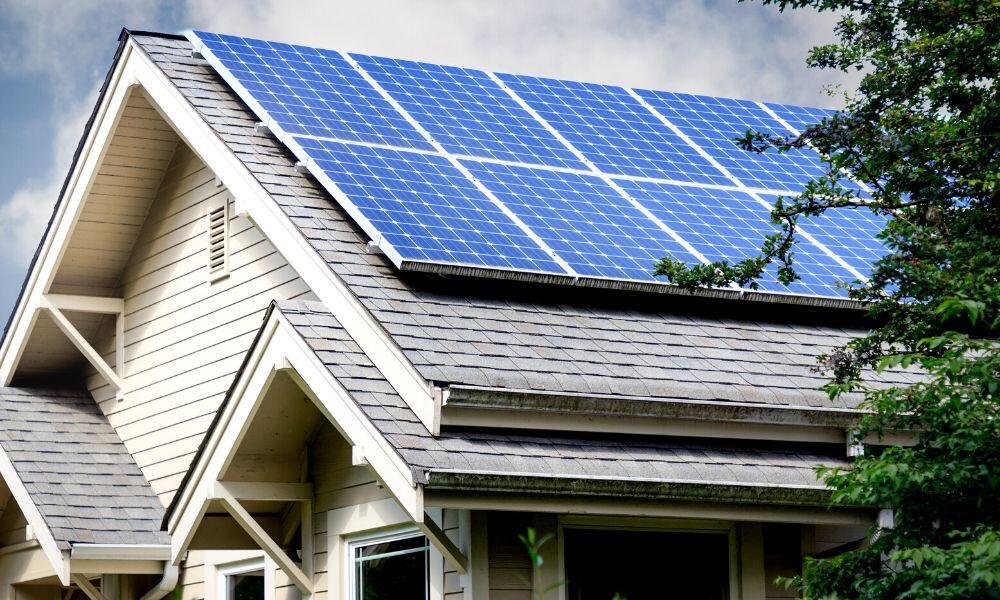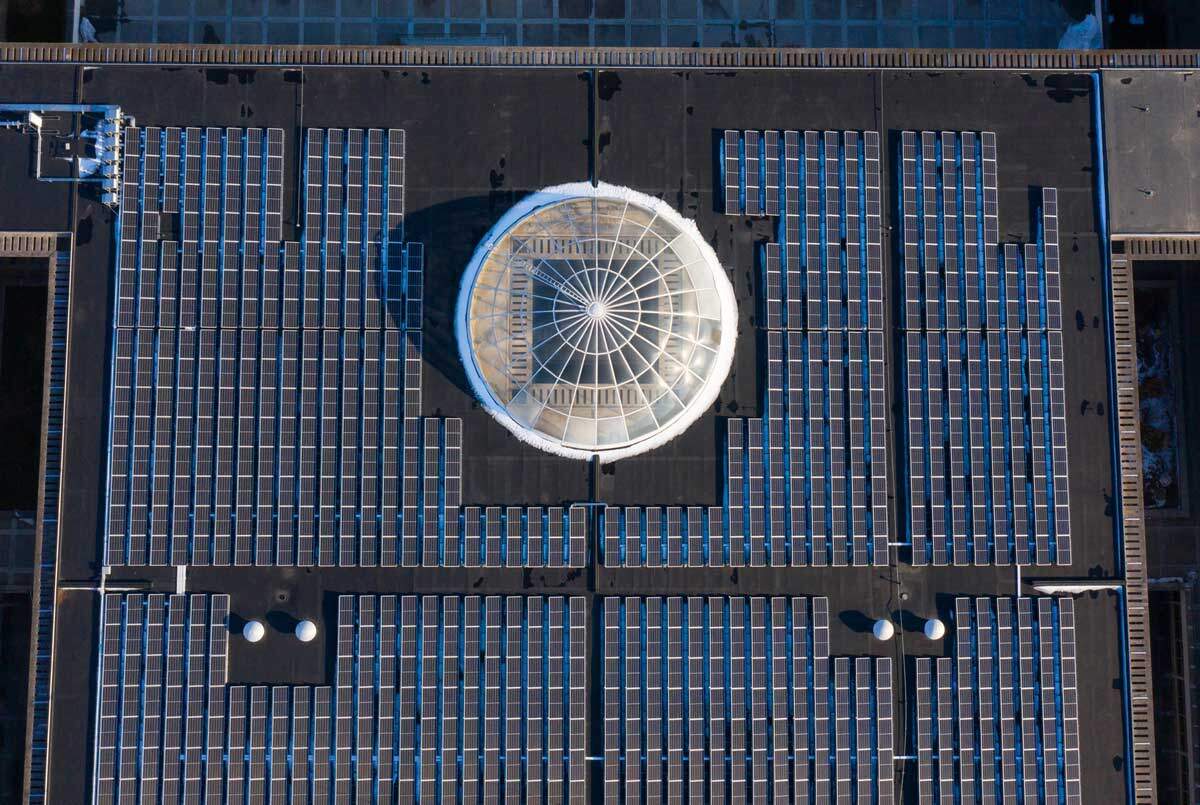Manhattan college takes lead on green energy by setting up vast array of solar panels
(image courtesy: Louis Chan)
nydailynews.com
Jared McCallister
April 15, 2018
High above the fume-spewing cars and trucks near the Holland Tunnel in Tribeca is a huge hint of the “green,” fuel-saving happenings at the nearby Borough of Manhattan Community College — the largest array of energy-grabbing solar panels in Manhattan sitting atop the school’s roof.
And while the new panels channel hundreds of kilowatt-hours of clean power, BMCC administrators below support long-term projects, encourage day-to-day initiatives and special events, such as an annual sustainability fair, to help faculty, staff and students meet the college’s environmental and cost-saving objectives.
“We’re saving enough now where we can actually say that we’ll be saving (the equivalent of) about 600,000 gallons of gasoline a year just from the energy savings,” said Scott Anderson, the college’s vice president for Administration and Planning, about BMCC’s solar setup and campus-wide efforts to reduce greenhouse gas emissions and energy consumption.
Participants examine a display at the 2017 Sustainability Fair at Borough of Manhattan Community College.
(Louis Chan)
The project is part of City University of New York college system-wide plans to get senior and community colleges more sustainable in the areas of “energy, water, transportation, procurement, recycling, sustainable education and outreach, and sustainable nutrition,” according to officials.
Completed just three months ago as the biggest in Manhattan, the college’s solar panel project on Chambers St. will become the second largest facility of its type in the borough next year when the high-rise Stuyvesant Town complex debuts a solar project encompassing 22 acres of rooftops. Nevertheless, BMCC will still get big props as a shining example of solar power in the city, says Anderson, who chairs of the school’s Sustainability Committee, that unities administration, faculty and the student body.
“In terms of a government building, a retrofit, BMCC’s [STILL] got the largest solar display in Manhattan,” said Anderson, adding that the plant is able to provide 312 kWh of electricity, aid the local grid with its excess power during times of high energy demand. The school’s 900-plus-unit solar project was created in collaboration with the state’s New York Power Authority.
Traffic is backed up leading into the Holland Tunnel near BMCC.
(Bryan Smith For New York Daily News)
Citing excellent returns for money spent, he said, “We spent $3.3 million and already we have a ROI (return on investment) of 1.8 years.”
To encourage energy conservation, minute-to minute, real time power usage at BMCC’s Chamber St. location can be tracked on its “Energy Dashboard,” the first such online device at the CUNY school.
For students, BMCC is hosting its in-house, 2018 Sustainability Fair on Thursday (April 19) – featuring hands-on sustainable research, curriculum-connected demonstrations and exhibits, displays of organic and locally sourced food, and presentations from outside groups such as the New York Public Interest Research Group, Food & Water Watch, GrowNYC, Transportation Alternatives.
There will also be screenings of the 2015 documentary “This Changes Everything,” about communities around the world grappling for solutions to climate changes
From the roof down, the Manhattan school has made improvements with sustainable goals in mind — including a 26-bathroom renovation to upgrade temperature control systems and replacement of decades-old heating and air conditioning systems in classrooms, offices, cafeterias and other areas with energy-efficient equipment, and the purchase and use of chlorine- and bleach-free and recycled paper products.
The efforts run the gamut, with hi-tech and low-tech methods of sustainability in play ranging from with solar panels and energy-saving (equipment) to easily installed, low-tech thermal blankets covering large pipes and control valves to conserve heat and save energy.
And there are plans for more plant-filled “green roofs,” currently taking up 11,592 square feet of building tops at BMCC’s Fiterman Hall, on Greenwich St., used to collect rainwater for heating and air conditioning systems.
But all the equipment-focused initiatives are complemented by the sustainability efforts of BMCC staff and students. Organized Administration and Planning staffers, Thursday’s fair featured student clubs — such as Engineering, Research & Nature, Health & Wellness Club and Economics, Equality and Environmental — joining BMCC/CUNY Sustainability, and the college’s Public Safety Department, the Buildings & Grounds division, the BMCC Library and MBJ Food Services.
Power usage at BMCC’s Chamber St. location can be tracked on the college’s dashboard.
(Borough of Manhattan Community C)
But for economics professor Christine Farias, Anderson and others, engaging and empowering the students are an important key of their sustainability initiatives.
Farias, a committee member, said the Economics, Equality and Environment Club recently won CUNY Student Sustainability Grant Competition for video project “Food Waste to Golden Compost on an Urban Campus,” which debuts at Thursday’s fair.
Farias said the club members’ accomplishment evolved from faculty-mentored research, experiments and field trips on food waste, composting, waste disposal and recycling and Anderson added that some the students’ enthusiasm was sparked by last year’s fair.
“They (the students) got psyched up enough where they did a five-minute film about recycling food scraps to create compost,” Anderson said, adding that both the students and their professor were winners of the CUNY sustainability prize and its monetary award.
Anderson credited the college faculty with successfully spreading the sustainability concept to students.
“If you don’t get the faculty involved, it’s hard to keep the student’s involved. They need that constant reinforcement and grounding that someone who’s on a full-time salary can give them.”
Tightly fitting thermal blankets, controlling excess heat in pipes and conserving energy, are part of the institution-wide sustainability initiative at BMCC
( Borough of Manhattan Community )
Especially at a community college. They’re only there for two years. You’ve got to be there to support that at the time they’re in front of you.”
And students are hearing the sustainability message and eagerly adopting the “green” methods. Abrar Hamed, psychology major and EEE Club president; and CUNY Research Scholar Aleksandra Artyfikiewicz, an economics major and an EEE club member.
“We have initiated steps towards implementing composting at BMCC and conducted a survey and research to determine whether recycling food waste would be an opportunity for BMCC to reduce costs and environmental footprint,” said CUNY Research Scholar Aleksandra Artyfikiewicz, an economics major and an EEE club member who works closely with club president Abrar Hamed, a psychology major.


